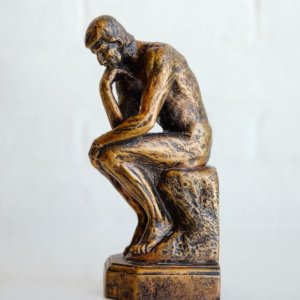How do you answer the question Who are you?

Who are you? Do you answer from your resume or from your genealogy?
If you have ever been asked about yourself by someone who is meeting you for the first time, do you have a reply handy? Do you know who you are?
I recently wrote a post about authenticity in which I ended with the statement ‘who I am is who I am,’ but I realize that I never gave that much thought before today.
We all have different responses when people ask us who we are. The questions may sound a bit like a job interview than a conversation with a new friend:
What do you do?
Where are you from?
What are your hobbies?
What people are really asking is “Who are you?”
Do we know, or are we so well trained to fill in the blanks with our resume, that we never give thought to who we are? Or what we believe? Or why do we do what we do?
Who are you in public?
When I was a child I was taught there were ‘company manners’ and ‘church clothes.’
When I dressed for play my mother called me a tomboy and when she dressed me for a dance recital (I would never dress myself for this!!) I looked like a Shirley Temple doll with a tutu.
I think we all learn at a very early age to be what someone expects us to be, depending on the context.
I would not apply for a professional job in jeans, nor would I show up to work in a greenhouse wearing satin and patent leather. (Yes, I know…I would NEVER wear patent leather and satin, but the image makes my point).
The expression ‘clothes make the man’(or woman) ignores the truth that the man (or woman) is already made.
Who are you when sick?
In contrast to the clothes we wear in different contexts, when we are sick we are stripped of the most basic attire and that brings us to a level playing field.
A hospital johnny is not styled differently for the rich and the poor, the executive, or the plumber. Everyone wears the same thing, known for its ability to expose our vulnerability and weaknesses.
We may be brought literally to our knees with pain and sickness while others straighten their back and march into debilitating treatments with bravado.
In either case, we come a lot closer to seeing who we are because there is no gain in pretending – There remains precious little benefit to tutus and patent leather the sicker we get.
Who are you when alone?
Are you the same person when you go to a job with coworkers and timeclocks as when you take a retreat by yourself in an isolated rustic cabin?
One of the benefits of being alone is we no longer have to impress anyone.
The constant inner voice of “what will people think” becomes a distant echo that is replaced by the sound of loons and lapping waves against the shore.
On retreat, we find the freedom to try on behaviors like sleeping late and wearing PJs all day. We may explore radical thinking with a pen or keyboard, exercise creative muscles, or sit in meditation. All the while eating whole bags of chocolate and polishing off the wine.
We come closer to meeting our real selves beneath the layers we wear when we are with others.
How you show yourself to others
My introverted tendencies are in full bloom when I find myself in a room crowded with people.
To compensate for this I have developed some social skills for communicating with other people, but I am always aware that I am in a different skin—one that doesn’t fit very well.
I have a friend who is a flaming extrovert and in the same gathering, she is as comfortable as I would be back at the cabin by the lake.
When we humans are with others the “what will people think” chip becomes activated, driving us to perform in ways we never do when alone.
After a lifetime of wearing metaphorical tutus I ask myself if I even know who I am and if not, how do I find out?
Three steps to self-discovery
Acknowledgment: When I think I know who I am, I don’t have any reason to seek the real me. I’ve spent a lifetime defining myself by a resume and a genealogical chart.
The first step in self-discovery is a change in mindset, acknowledging that I am more than what I have been showing the world all these years.
Curiosity: The next step to self-awareness after acknowledgment, is curiosity.
Well, if I am not a mother, senior citizen, writer, or white privileged American…who am I?
And how do I find out? Conversations with authors like Elizabeth Gilbert and Brenè Brown are good places to begin, for they write about authenticity and self-revelation.
Practice: The third step after acknowledgment and curiosity is practice—a daily habit that, for some people, may mean exercise and for others, refers to brushing their teeth.
The meaning of practice is more than exercise. Practice implies going deeper rather than wider in the understanding of who we are.
In this sense, practice is a spiritual experience that may include meditation and journaling, art and music, reflection or prayer among other actions that help us access our inner truths.
If you have ever wondered how to begin a simple practice, be sure to check out Simple Spiritual Practices -In the words of Margaret L., who recently finished the 4 module course– “This beautifully made course helps you “experience new strength and resilience for the challenges that come your way.”
If you know yourself to be a deep thinker, it may be time to sign up for TheReflectivePen

